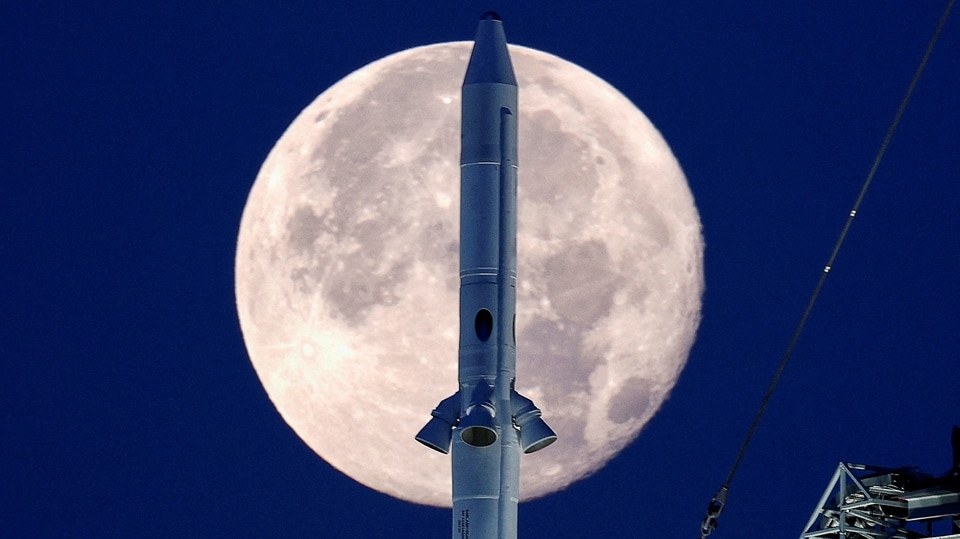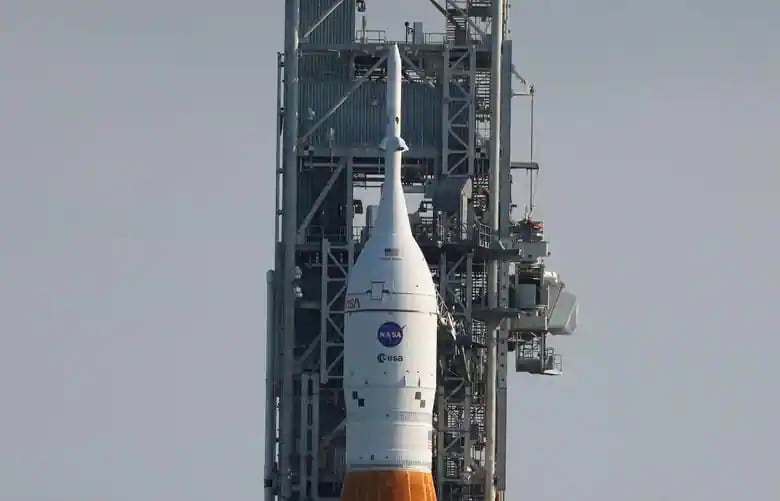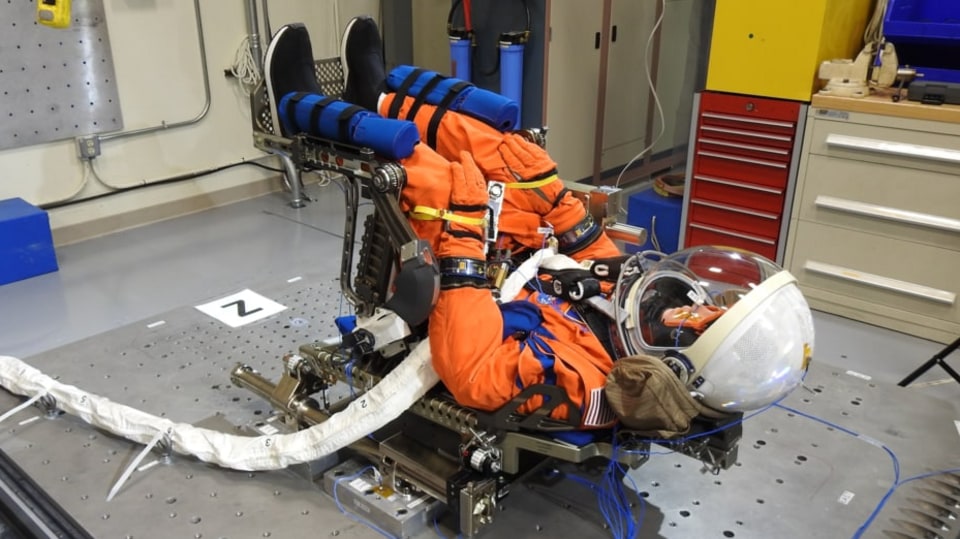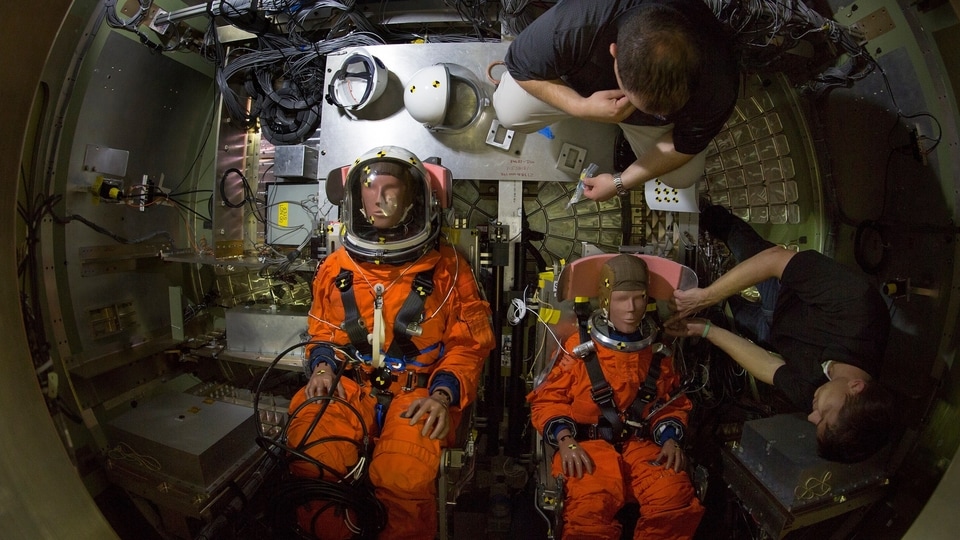NASA has 2 new dates in mind for Artemis moon mission launch, but hurdles remain
After postponing the Artemis I mission last Saturday, NASA once again has two new dates in mind, September 23 or September 27, for the next attempt to launch its massive moon rocket on an uncrewed mission.






 View all Images
View all ImagesAfter postponing the Artemis I mission last Saturday, NASA once again has two new dates in mind, September 23 or September 27, for the next attempt to launch its massive moon rocket on an uncrewed mission.
But there are still several things that could stand in the way of getting the Artemis I mission off the ground, any of which could push the launch date back further, CNN reported.
Earlier, NASA postponed the launch of the mission during the last launch attempt at the Kennedy Space Center in Florida on September 3, after an issue was found related to a leak in the hardware transferring fuel into the rocket. The rocket sprung a big leak as it was being fueled up with super-chilled liquid hydrogen.
NASA is trying to work through the leaky fuel problem with the rocket, called the Space Launch System or SLS.
And while the rocket is still on the pad, NASA is looking to troubleshoot that issue by repairing and replacing some seals before running tests to make sure all the leaks are plugged, NASA officials said at a Thursday press conference.
It's not yet clear how long that will take.
Then, there's the issue with certification. The US Space Force, an arm of the military, still oversees all rocket launches from the United States East Coast, including NASA's Florida launch site, and that area is known as the "Eastern Range." CNN reported.
The officials at the range are tasked with making sure there's no risk to people or property with any launch attempt.
And that means the Eastern Range also must give NASA the thumbs up that the rocket's Flight Termination System -- a system that will essentially destroy the rocket mid-air if it veers off course and starts heading in a populated direction -- is ready to fly.
That system relies on batteries, however, that, under current rules, must be recharged at a nearby indoor facility before the newly proposed launch dates arrive.
NASA is hoping to get a waiver on that rule. But it's not yet clear when or if that request will be granted. If NASA does not get that waiver approval, the SLS rocket will have to be rolled off the pad and back into the nearby Vehicle Assembly Building, triggering more delays.
At the Press conference, Associate Administrator for NASA's Exploration Systems Development Mission Directorate, Jim Free said, "If they decide that is not the right thing to do, we obviously will support that and stand down and look for our next launch attempt."
"But we still will press with the tanking test," he said, referring to the tests NASA plans to run to fix the hydrogen leaks while the rocket is still on the pad.
The Artemis I flight test is an uncrewed mission around the Moon that will pave the way for a crewed flight test and future human lunar exploration as part of Artemis.
"Managers waved off the first launch attempt on August 29 when launch controllers were unable to chill down the four RS-25 engines, with one engine showing higher temperatures than the other engines," NASA said in an earlier statement.
NASA had called off a planned test flight of the Artemis rocket around the moon after a series of setbacks including an engine issue, a hydrogen leak, and stormy weather off the coast of Florida.
"The launch of Artemis I is no longer happening today as teams work through an issue with an engine bleed. Teams will continue to gather data, and we will keep you posted on the timing of the next launch attempt," NASA said in an earlier tweet.
It's the first mission in NASA's Artemis lunar program, which is expected to land the agency's astronauts on the moon by its third mission in 2025.
NASA plans to fly Orion as close as 60 miles above the moon's surface, before moving into a wide orbit around the lunar body. To return, Orion will use the moon's gravity to assist it in setting a trajectory back into Earth's orbit.
Orion is expected to splash down in the Pacific Ocean off the coast of San Diego, California where a team of NASA and Department of Defence personnel will recover the capsule. (ANI)
Catch all the Latest Tech News, Mobile News, Laptop News, Gaming news, Wearables News , How To News, also keep up with us on Whatsapp channel,Twitter, Facebook, Google News, and Instagram. For our latest videos, subscribe to our YouTube channel.




























